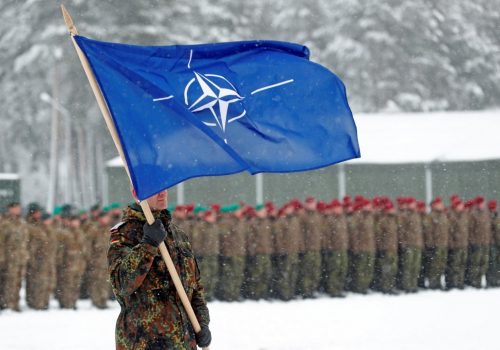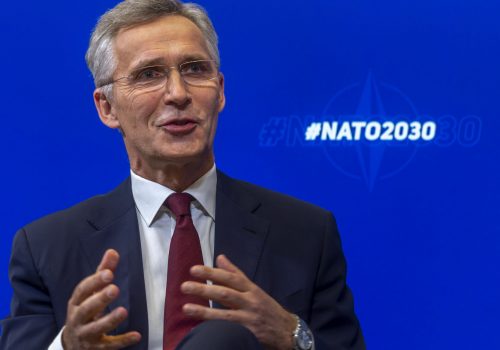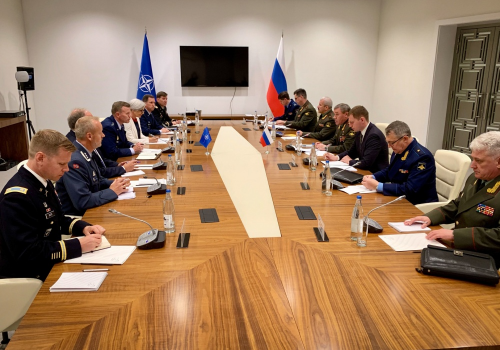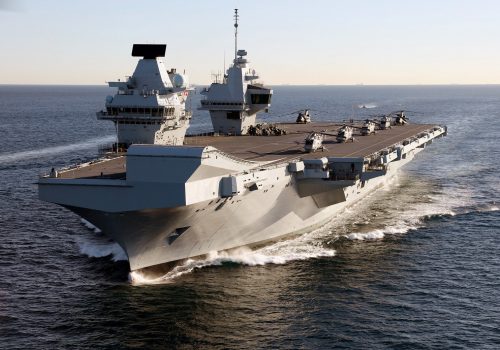October 14, 2020
Modernize the kit and the message
Over the last few years NATO has been called many things, from obsolete, to brain-dead, to warmongering. So we must be doing something right. In truth, built on the common values of individual liberty, democracy, human rights, and the rule of law, NATO is an unparalleled defensive Alliance which has kept the Euro-Atlantic region and beyond safe for more than seventy years. It has played a crucial role in bringing security and stability to Europe and its neighborhood, as its role in the Balkans showed. The importance of this can’t be underestimated in this seventy-fifth anniversary of the end of the Second World War. NATO continues to act as a platform for shared values and interests, now with partnerships across the world. The world is growing more dangerous. Technological advances have the potential to transform warfare as significantly as nuclear weapons did after WW2. We need to be clear with our publics what NATO does now and needs to do in the future. Tellingly, a lot of Russian energy still goes into trying to undermine the North Atlantic Alliance every day. NATO is fit for the challenges of today. But it will only remain successful over the next seventy years if it continues to modernize its capabilities and its message.
New threats and complex challenges
The threats NATO faces today are much more multifaceted than those faced by the Alliance when it was first established. Great power dynamics are making the world more unpredictable. Russia and China seem to see the current situation as a competition to re-set the rules of international affairs and their actions are getting more dangerous in this respect.
Russia continues to pursue hybrid warfare and to develop new ways to destabilize Europe and the Alliance with the United States, using everything from disinformation to new missile systems. The Skripal poisonings in Salisbury, an English city, in 2018, underscored the seriousness of the threat we face from Russia. As the United Kingdom’s permanent representative to the United Nations at the time, I saw Russia making light of a reckless and dangerous attack in which a British citizen died and many more were endangered. In leaving the Novichok agent in a public place, Russia’s GRU played dice with the lives of British citizens.
After this attack, the UK and our allies ensured that Russia paid a heavy price for breaking international law, including through the expulsion of 153 intelligence officers from NATO members and other European countries. But two years later, a banned chemical weapon has again been used, this time against leading Russian opposition figure Alexey Navalny. This is little short of gangsterism. The five permanent members of the UN Security Council have a special duty to uphold international law on the prohibited use of chemical weapons.
Meanwhile China is also investing heavily in new capabilities, global infrastructure, cyberspace, nuclear weapons, and long-range missiles that could reach NATO nations. China’s actions in the South China Sea and use of malicious cyber activity for criminal ends risk a wider security effect. The COVID-19 pandemic has further increased uncertainty and accentuated trends. It has sharpened the focus on the challenge Beijing increasingly poses, and shown that China, as well as Russia, is quite capable of spreading disinformation to advance its own interests.
NATO members want to use new innovations to benefit their citizens and to bolster open societies. But we need to be alive to the risk that state adversaries will utilize technological developments to undermine our traditional strengths, and even against their own citizens as we have seen with China’s use of artificial intelligence in Xinjiang. And we cannot be confident that we can prevent such technologies reaching malign non-state actors.
Keep on modernizing
The good news is that NATO has a track record of adapting fast to new priorities. Since Russia’s invasion of Ukraine in 2014, the Alliance has transformed. It has established enhanced Forward Presence on its eastern flank, adapted its command structure, increased the readiness of its forces, and agreed on a new military strategy. It has recognized cyber and space as new domains of operations, acknowledged that cyber and hybrid attacks could lead to the invocation of Article 5, and introduced a counter-hybrid strategy. It has also adapted to address Russia’s deployment of new intermediate-range missiles, including by strengthening air and missile defenses and adapting exercises; built new partnerships (40 and counting, including in the Indo-Pacific); and is playing a constructive role in countering the global pandemic by delivering personal protective equipment and medicine. And it has welcomed new allies—Montenegro in 2017 and North Macedonia this year, whilst giving Ukraine the privileged status of enhanced opportunity partner.
Now, NATO is readying itself for artificial intelligence and autonomous weapons, quantum computing which could render current encryption obsolete, and new weapons such as hypersonic missiles that have global reach and could reduce allies’ decision time in the face of attack. There has already been some impressive progress, including the agreement in London of a clear roadmap for “Emerging and Disruptive Technologies,” which describes the complex security environment which allies will navigate together.
In the UK, we are already thinking through how best to reshape the armed forces and modernize capabilities through our Integrated Foreign, Security and Defence Review. NATO will remain the bedrock of the UK’s collective security. Our defense budget will keep increasing above the rate of inflation. We will continue to see the two percent of GDP target as a floor, not a ceiling.
At the heart of the UK’s renewed offer to NATO will be a set of capabilities which demonstrate the value of agility and speed of response, readiness, and our status as a framework nation. Innovation, as well as science and technology, will be central to our capability strategy. Underpinned by the commitment of our number one strategic asset, our Continuous At Sea Nuclear Deterrent, we will bring leading capabilities across air, sea, land, space, and cyber.
We believe that this will, increasingly, become the direction of travel for the whole Alliance as it implements its new deterrence and defense concept. Future armed forces will be measured not by the number of platforms in our inventories, but by our ability to outmatch any adversary, wherever and however they fight, even if those fights are gray zone efforts to undermine our security in other ways. Deterring a growing range of threats from a larger range of state and non-state actors will require a broader range of capabilities from across our governments, and from our collective Alliance.
Invest in our message
As NATO continues to adapt, so too do we need to demonstrate and communicate the value it holds to our citizens. When NATO allies see things differently, as all good friends sometimes do, the press and media work overtime to highlight our differences. That is their job. When NATO is quietly getting on with its day-to-day work, its one billion citizens hear much less. Communicating this positive message was one reason the UK was so proud to host the NATO Leaders’ Meeting last year in London, the home of NATO’s first headquarters, where we marked the seventieth anniversary of the signing of the founding Washington Treaty.
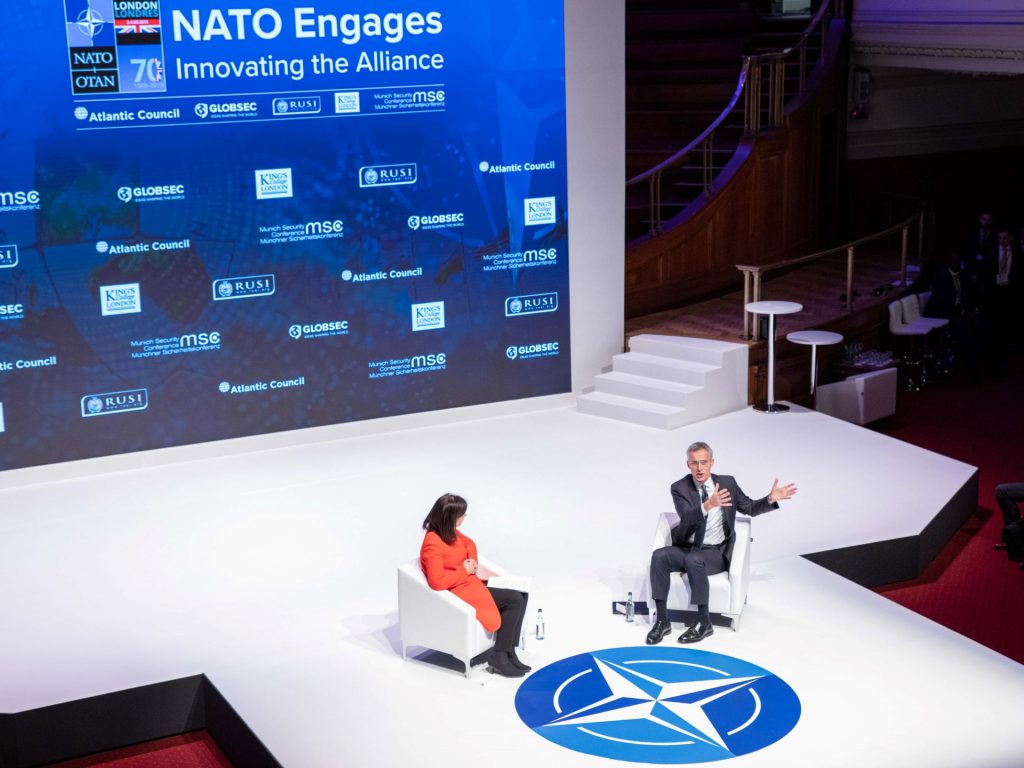
When NATO allies see things differently, as all good friends sometimes do, the press and media work overtime to highlight our differences. That is their job. When NATO is quietly getting on with its day-to-day work, its one billion citizens hear much less.
NATO Secretary General Jens Stoltenberg speaks at the NATO Engages event on the sidelines of the NATO Leaders’ Meeting in London in December 2019.
(Source: Atlantic Council)
We invited politicians and military officers, along with think tankers and academics, to join the celebrations, but we also wanted younger generations to take pride in the Alliance’s successes. Reaching new audiences is a key goal of the NATO Engages Consortium, and these scene-setting events, held on the sidelines of formal NATO meetings, have fast become one of the liveliest parts of the NATO calendar.
The audience at the NATO Engages event in London reflected the contemporary makeup of the societies the Alliance is designed to protect, with a majority under the age of thirty. In my experience, that age group wants to be talked with, not at, and they want to hear directly from pilots and aid workers, not just politicians. They want to hear from people their own age as well; people like 16-year-old Olivia Seltzer from Santa Barbara, California, who founded ‘The Cramm’ newsletter, which now reaches readers in seventy countries around the world.
The British Embassy in Washington DC, where I am now based, works to amplify such activity and reach new generations of Americans. For thirty-five years, embassy officials have enjoyed talking to university students participating in the annual International Model NATO Conference. Investment in our students is an investment in our future security.
As the strategic context has evolved, so too has public perception. NATO’s work should not only reflect the challenges we face today but cater to the modern-day concerns of its citizens, and we need to tell this new chapter in the NATO story with confidence and clarity. NATO Secretary General Jens Stoltenberg’s launch of #NATO2030 demonstrates his understanding of this challenge—we hope all NATO allies will follow.
Governments have a duty to be honest and open with our citizens—a duty we NATO members discharge, in stark contrast to our adversaries. This is critical for the public support we need to make investments and adaptations. No single ally, including the United States, can face the growing threats alone. It is recognition of these threats that brought the increases to defense spending agreed at the London Leaders’ Meeting, with an additional $400 billion due to be spent on defense by non-US allies between 2016 and 2024. Whilst the post-COVID-19 economic challenge will be huge, security investment remains crucial: collective defense is also cost-effective defense and it is what ensures peace. By taking on more of the burden of securing the US’s Western flank, the UK and other NATO allies are helping the United States respond to the growing challenge of China. China’s expanding influence and international policies present both opportunities and challenges that we need to address together as an Alliance.
As UK ambassador to the United States, I want to get across the concept that our continued strength and security comes from Euro-Atlantic unity. All of NATO’s citizens, American or otherwise, should recognize that the Alliance is critical for all our national security. NATO stood in solidarity with the United States and invoked Article 5 of the Washington Treaty for the first and only time in response to the 9/11 terrorist attacks on the United States. Since then, thousands of European and Canadian servicemen and women have joined the fight against terrorism alongside their American allies around the world. I saw this myself when I was the UK’s ambassador to Afghanistan: NATO means that the United States doesn’t have to fight alone.
Look to the next seventy years
NATO is bound to be called more names over the next seventy years. That’s fine—scrutiny, openness, and challenge are important and powerful antidotes to authoritarianism. And our freely-enjoined Alliance represents a contribution to security and stability everywhere as well as to our ability to project our power, our influence, and our values for good around the world.
Over the next seventy years, NATO will continue to adapt in the face of emerging challenges and technologies. The most powerful and successful Alliance the world has seen will not ossify. We’ll continue to call out attacks on our values and our open societies, wherever and whoever they come from. And we will do so from a position of strength, a position underpinned by capabilities adapted to tackle a changing threat. The capabilities of NATO will modernize and change; the strength of NATO will remain the power of its allies and their ability to share burdens.
* * *
H.E. Dame Karen Pierce DCMG is the British ambassador to the United States.
Explore the podcast series
Related NATO 20/2020 essays
Related program
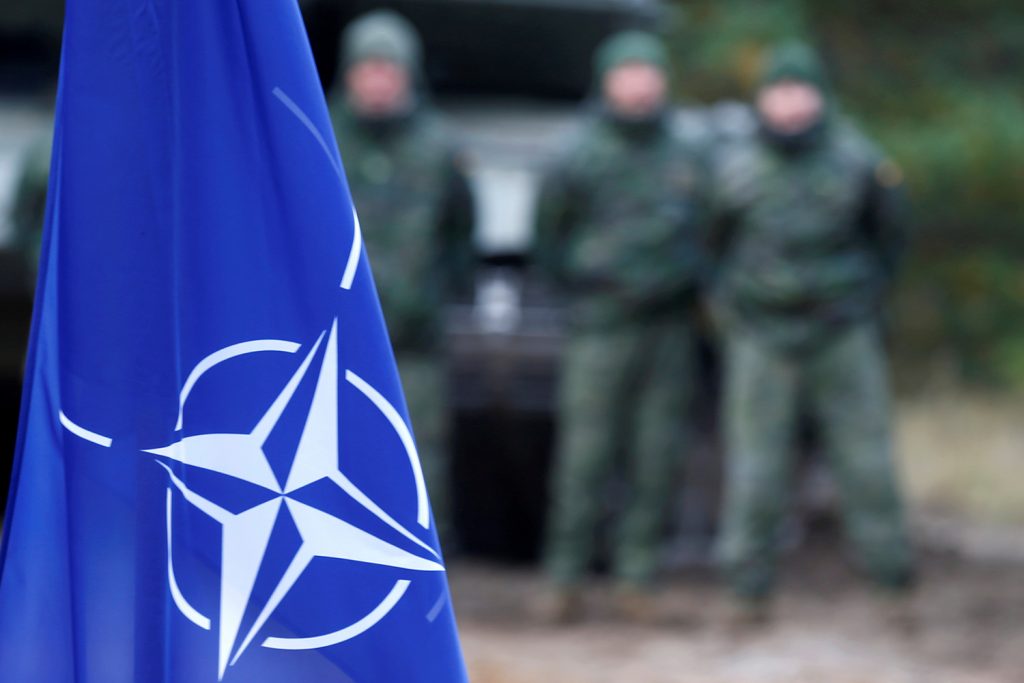
The Transatlantic Security Initiative, in the Scowcroft Center for Strategy and Security, shapes and influences the debate on the greatest security challenges facing the North Atlantic Alliance and its key partners.
Subscribe for events and publications on transatlantic security
Sign up for updates from the Atlantic Council’s Transatlantic Security Initiative, covering the debate on the greatest security challenges facing the North Atlantic Alliance and its key partners.
Image: F-35B Lightning Jets embarked on HMS Queen Elizabeth for the first Carrier Sea Training. (UK Ministry of Defence)
